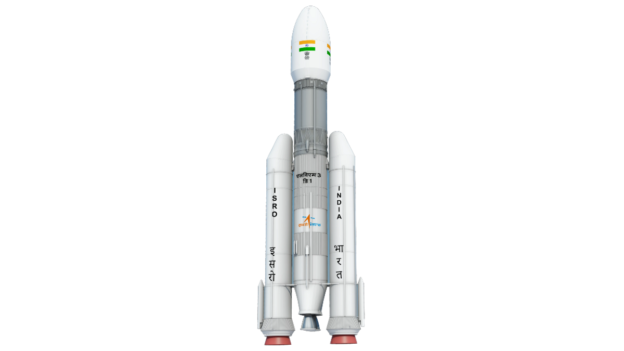The development of the GSLV 3 rocket has had a significant impact on India’s space program. Prior to the development of the GSLV 3 rocket, India relied on foreign launch vehicles to place heavy payloads into orbit.
India’s space program has come a long way since its inception in the 1960s. From launching its first satellite, Aryabhata, in 1975 to sending a spacecraft to Mars in 2014, the Indian Space Research Organization (ISRO) has achieved several milestones.
One of the most significant achievements of ISRO is the development of the Geosynchronous Satellite Launch Vehicle (GSLV) series of rockets.
ISRO plans to incorporate the rocket, which was created after more than thirty years of research and development, in all upcoming deep space exploration missions, including Gaganyaan, India’s initial human mission, expected to be launched in the beginning of 2024. Besides being capable of launching more massive commercial satellites, the rocket is estimated to be a significant source of income for ISRO.
What is the GSLV 3 Rocket?
The GSLV 3 rocket, also known as the LVM3 (Launch Vehicle Mark 3), is a three-stage rocket developed by ISRO. It is designed to carry heavy payloads into space, including communication satellites and interplanetary probes.
The rocket stands at a height of 43.5 meters and has a lift-off mass of 640 tonnes and a 5-metre diameter payload fairing.
It is a heavy lift launch vehicle of ISRO for achieving a – 4000 kg spacecraft launching capability to GTO (Geosynchronous Transfer Orbit) which is approx 35,786 km above sea level, in a cost effective manner.
The first successful launch of the GSLV 3 rocket took place on June 5, 2017, when it placed the GSAT-19 satellite into orbit and then the GSAT-29 communication satellite on November 14, 2019.
Main features of GSLV 3 Rocket
The GSLV Mk-III spacecraft utilizes a liquid engine at its core and is also equipped with two solid boosters that generate significant thrust during launch. The upper stage of the spacecraft is powered by an indigenous cryogenic engine.
What is a Cryogenic Engine?
The cryogenic engine uses liquid hydrogen as fuel and liquid oxygen as an oxidizer, which gives it a higher specific impulse compared to other rocket engines. This allows the GSLV 3 rocket to carry heavier payloads into space.
Another feature of the GSLV 3 rocket is its modular design. The rocket is designed in a modular fashion, which means that each stage can be replaced or upgraded independently. This makes it easier and more cost-effective to maintain and upgrade the rocket.
Impact of GSLV 3 Rocket on India’s Space Program
The development of the GSLV 3 rocket has had a significant impact on India’s space program. Prior to the development of the GSLV 3 rocket, India relied on foreign launch vehicles to place heavy payloads into orbit. This was not only expensive but also limited India’s capabilities in space. With the GSLV 3 rocket, India can now launch heavier payloads into space, including communication satellites and interplanetary probes.
The GSLV 3 rocket has also boosted India’s space exploration capabilities. With the ability to launch heavier payloads, ISRO can now send larger spacecraft to explore other planets in our solar system. In fact, ISRO’s first interplanetary mission, the Mars Orbiter Mission (MOM), was launched using the PSLV rocket. However, with the GSLV 3 rocket, ISRO can now send larger spacecraft to explore other planets.
Challenges Faced by ISRO in Developing GSLV 3 Rocket
The development of the GSLV 3 rocket was not without its challenges. One of the biggest challenges faced by ISRO was the development of the indigenous cryogenic engine. The cryogenic engine is a complex piece of technology that requires precise engineering and manufacturing. ISRO had to overcome several technical hurdles before it could successfully develop the engine.
Another challenge faced by ISRO was the need for a larger launch pad to accommodate the bigger rocket. The existing launch pad at Sriharikota was not big enough to accommodate the GSLV 3 rocket. ISRO had to build a new launch pad, which added to the cost and time required for the project.
What are future plans for GSLV 3 Rocket?
ISRO has ambitious plans for the GSLV 3 rocket. In the future, ISRO plans to use the GSLV 3 rocket to launch its first crewed mission, Gaganyaan. The mission aims to send three Indian astronauts into space for up to seven days. The crewed mission is expected to take place in the beginning of 2024.
ISRO also plans to use the GSLV 3 rocket for its upcoming lunar mission, Chandrayaan-3. The mission aims to land a rover on the Moon’s surface and conduct scientific experiments. The mission is expected to take place in late 2023.
Is it a game changer?
Yes. The development of the GSLV 3 rocket has been a game-changer in India’s space programme. It has allowed India to launch heavier payloads into space and boost its space exploration capabilities. The indigenous cryogenic engine and modular design make it easier and more cost-effective to maintain and upgrade the rocket. With ambitious plans for crewed missions and lunar exploration, the future looks bright for India’s space program with the GSLV 3 rocket at its core.
https://www.financialexpress.com/defence/isros-gslv-3-rocket-a-game-changer-in-indias-space-program/3009209/





